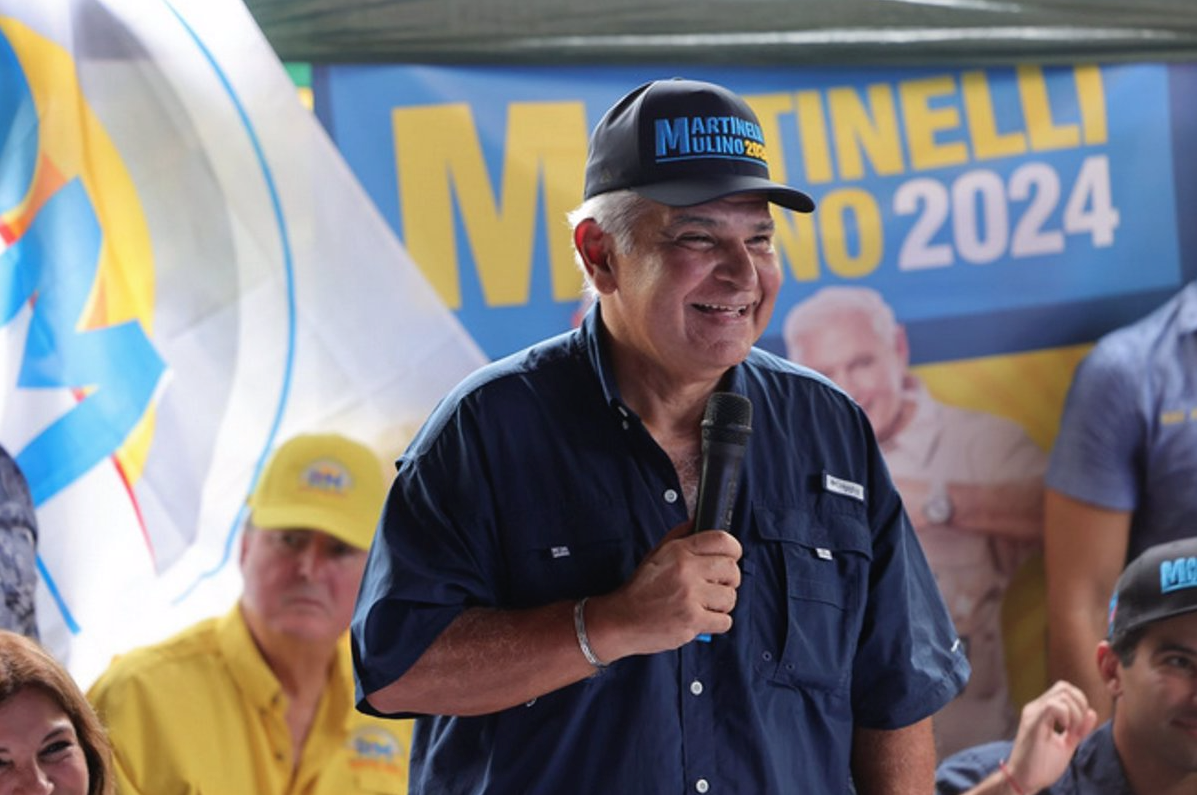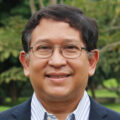For the young people who thronged the streets of Panama City last November protesting against mining, and who also flooded the ballot boxes two weeks ago, the restrictions on civil rights such as freedom of the press and freedom of association, and the prohibition of political parties during the military dictatorship between 1968-1979, are unthinkable today. Only in the aftermath of the 1977 plebiscite for the approval of the new Panama Canal treaties, the military regime allowed the resurgence of political parties, including those that had dominated the political scene in the sixties (Liberals, Panamanians, and Christian Democrats, among others). At the same time, the regime launched its own political instrument to consolidate its revolutionary process called the Democratic Revolutionary Party (PRD).
Since then, and at least until 2004, the division between the so-called civil parties that advocated for the return to democracy, and those political parties that supported the process, guided the evolution of Panamanian politics, going through transcendental electoral episodes such as those of 1984 and 1989. In the first direct presidential election after the military coup of 1968, the parties supporting the revolutionary process succeeded in electing Nicolas Ardito Barletta of the National Democratic Union (UNADE) to the presidency amidst accusations of fraud by the main opposition force, the Democratic Opposition Alliance (ADO). The ADO was formed by the Authentic Panamanian Party, Christian Democratic Party (PDC), and Nationalist Republican Liberal Movement (MOLIRENA), and had nominated the historic Panamanian leader, Dr. Arnulfo Arias Madrid, for the presidency.
Five years later, and a few months before the US military invasion, the May 1989 elections were suspended due to the instability generated by the crisis of the regime of General Manual Antonio Noriega. Surprisingly, after the December invasion, the ballots were recounted, proclaiming the triumph of the civilian alliance ADO led by President Guillermo Endara Galimany of the Authentic Liberal Party (PLA), and his vice presidents Ricardo Arias Calderon (PDC) and Guillermo Ford (MOLIRENA). The cleavage forged during the military dictatorship was extended during the 1994, 1999, and 2004 elections. In 1999, Mireya Elisa Moscoso, widow of the caudillo Arnulfo Arias Madrid, faced Martín Torrijos Espino, son of the founder of the PRD and supreme head of government between 1969-1981, General Omar Torrijos Herrera.
In this same period, a possible realignment of political forces began to be glimpsed with the appearance of a new generation of parties with aspirations to become third forces such as the Solidarity Party and the Papa Egoro Movement; as well as the misalignment of historical civil forces such as the Christian Democratic Party (PDC), which in 2000 decided to forge an unprecedented parliamentary alliance with the PRD. Likewise, Solidarity launched the candidacy of former president Guillermo Endara Galimany as a third force in 2004, thus attenuating the deep rift that had prevailed between civilists and supporters of the process during the eighties and nineties.
In 2009, the unexpected election as president of Ricardo Martinelli Berrocal, candidate of the Democratic Change (CD) Party; who openly referred to Panamanians and PRDs as old bones of politics, foreshadowed the end of the division between civilists and supporters of the process adopting for the first time the fight against corruption as a banner to win the vote of the population. At that time, both MOLIRENA and the Panamanian Party joined Martinelli’s political renovation proposal, eventually incorporating the Solidarity and National Liberal Parties that had merged into the new Patriotic Union (UP) collective.
Possibly, Martinelli’s election represented the beginning of the end of the party system consolidated with the return to democracy, which alternated the highest office periodically: Guillermo Endara Galimany (Partido Arnulfista) between 1990-1994, Ernesto Pérez Balladares (PRD) between 1994-1999; Mireya Elisa Moscoso (Partido Arnulfista) between 1999-2004; and Martín Torrijos Espino (PRD) between 2004-2009. The attacks against the former presidents and people close to them, openly accusing them of corruption, reinforced Martinelli’s image as a reformer, crystallizing the aspiration of constituting a third force in Panama.
The consecutive presidencies of Juan Carlos Varela (Panamanian Party) between 2014-2019 and Laurentino Cortizo Cohen (PRD) between 2019 and the present, seemed to support the continuity of the historical cleavage and made Martinelli’s candidacy look like an isolated episode. Despite this, behind the scenes, new political forces were beginning to emerge through the thriving movement for free nomination candidacies, in Panama better known as independent candidacies. In 2009, the same year of Martinelli’s election, the leftist economist, Juan Jované De Puy tried to launch his candidacy for the presidency by free nomination. Although it had been considered inadmissible by the Electoral Tribunal, the Supreme Court of Justice subsequently declared it viable just hours before the elections of that year.
In the years to come, a sector of the left continued to advocate for the candidacy of Professor Jované, as well as for others equally detached from the traditional political parties through the Independent Movement for National Renewal (MIREN), achieving the sympathy and support of a sector of the population in the 2014 elections. In those same elections the former attorney general of the nation, Ana Matilde Gómez, was chosen as independent deputy being the most voted at the national level. The success of this independent candidacy opened the doors for her nomination for the presidency through this same route as well as for the election of five independent deputies in 2019 including the founders of the Vamos Movement (Let’s go), Gabriel Silva and Juan Diego Vásquez.
The 2019 election also saw the irruption of Ricardo Lombana in Panamanian politics obtaining the third position in the presidential race with 19% of the vote after Laurentino Cortizo of the PRD 33% and Romulo Roux of the Democratic Change (CD) 31%, and ahead of the official candidate, José Isabel Blandón of the Panamanian Party. For the first time, the possibility of winning the presidency and forging a significant parliamentary force through free nomination was perceived as viable, raising expectations for the 2024 elections.
The recent elections
In the last election, Ricardo Lombana obtained the second place with 24.8% of the vote at the national level being surpassed only by the candidate of the Achieving Goals (RM) Party, José Raúl Mulino 34.34%, and followed by the candidate of the Popular Party (PP) (former Christian Democracy), former president Martín Torrijos Espino 16%. Although clear connections can be found between the members of RM and especially president-elect Mulino with the civilian movement of the eighties; and between Martín Torrijos and the revolutionary process led by his father in the seventies; in the last elections three parties that had never won the presidency obtained the largest number of votes indicating the possibility of transcendental changes in the results of this electoral contest that until that moment in democracy had been dominated by the PRD, Panamanian and CD parties.
It remains to be defined whether the results of this May will mean the disappearance of the party system that has prevailed in Panama for half a century, following the regional trend manifested in other countries such as Venezuela, Colombia, Costa Rica, El Salvador and Guatemala; or whether the historical cleavage between civilists and defenders of the revolutionary process will find in the coming years new avenues of expression through more fluid and changing party structures such as the RM and MOCA parties registered only in 2021 and 2022, respectively. Certainly, RM has a great challenge ahead considering that no government party has managed to win the next election since the beginning of the democratic transition in 1989, and the historical parties PRD and Panamanian Party will have to make extraordinary efforts to recover the trust of the electorate considering that in the recent contest they only managed to accumulate 5.56% and 5.29% of the popular vote, respectively.
It remains to be defined what a new cleavage will consist of in this Century; or if Panama will rather float adrift with elections without programmatic content, and based mainly on personal sympathies and the agitation of emotions. The dichotomy between pro-Martinelli voters and anti-corruption voters that underlies the contest between José Raúl Mulino and Ricardo Lombana is likely to be only circumstantial, and will possibly end in the 2029 elections. Alternatively, there could be a differentiation between formally constituted political parties, and candidates by free nomination as it seems to be outlined in the National Assembly; where the Vamos Movement will debut 20 new deputies by free nomination in the legislative session that begins on July 1, 2024. Or perhaps in Panama, divisions prevalent in other countries of the region, such as the difference between state control of the economy versus free market, or gender equality and defense of the family, or even new splits between those who favor unlimited economic growth, and those who prefer to sacrifice profits for an integral human ecology, could be manifesting themselves.
Whichever direction Panamanian politics takes, the 2029 elections are considered decisive for the historical future of the country, with the possibility of the emergence of new political forces or the reconstitution of the historical parties that have led the country for the last fifty years. In this scenario, it is clear that a new generation of candidates and voters will sweep away the structures of the past, or build a new future from the bases of the struggle for sovereignty, democracy, and social justice.













